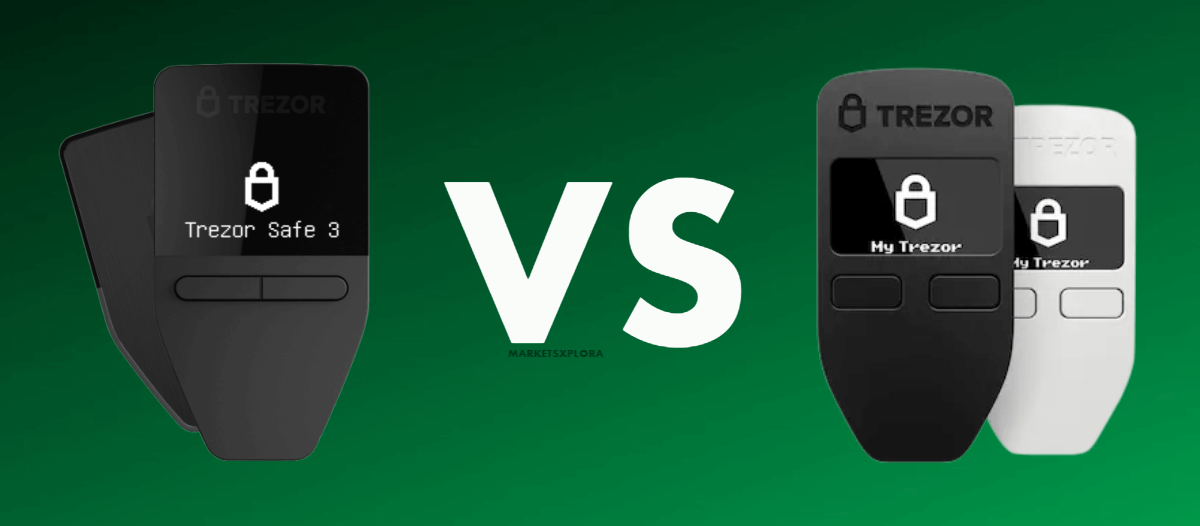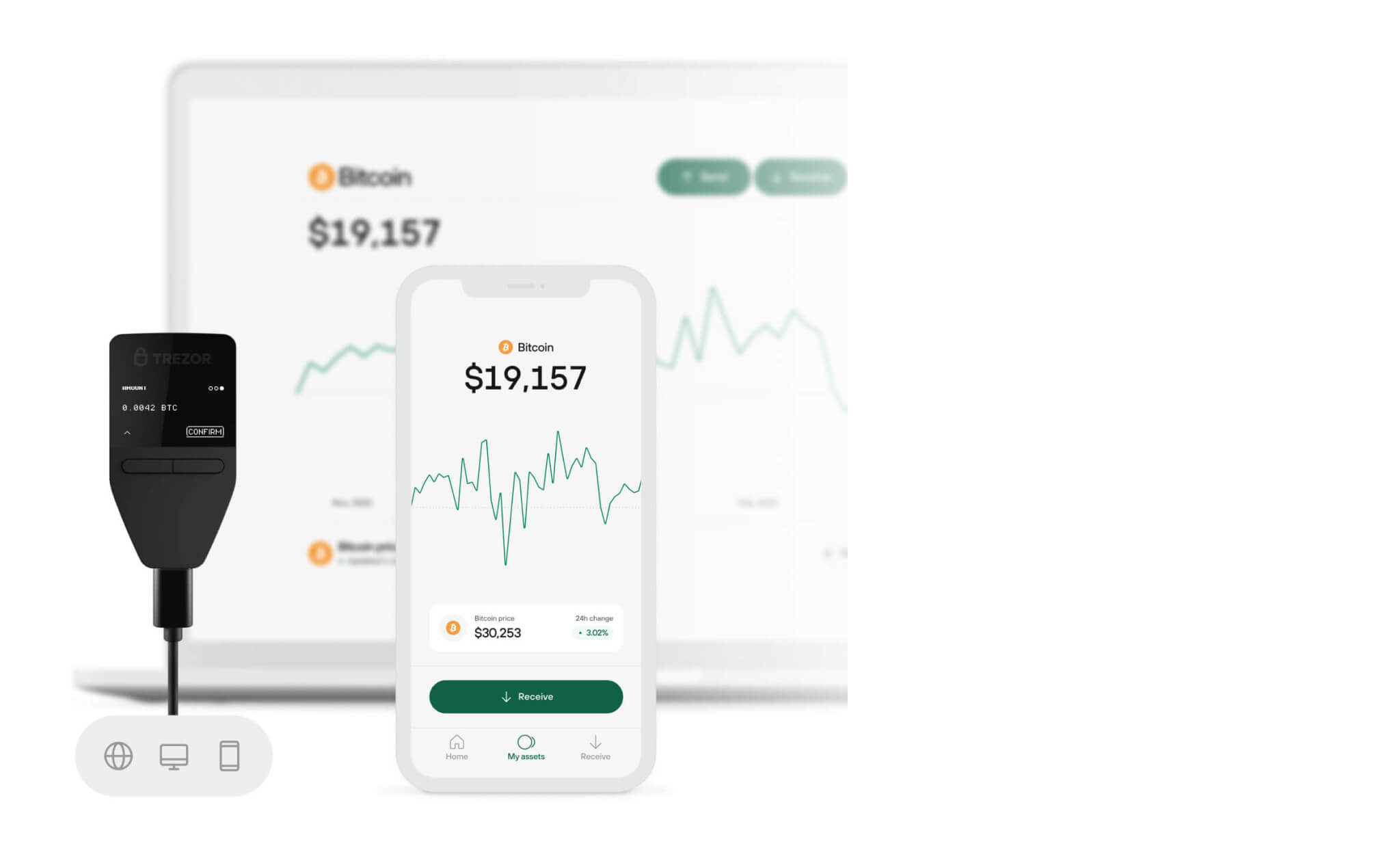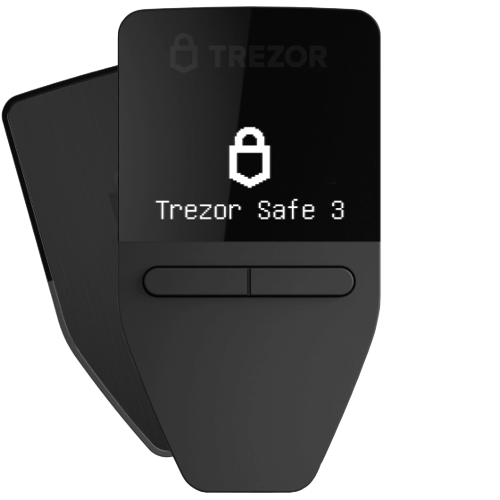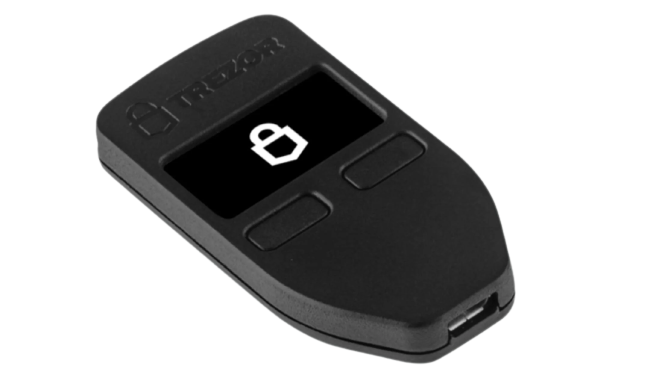
When it comes to crypto hardware wallets, Trezor has been a pioneering leader since they released the very first device, the Trezor Model One, back in 2014. Headquartered in Prague, Trezor brought cryptographic security to cold storage and enabled users to safely manage coins and tokens offline.
Nearly a decade later, Trezor continues to innovate with the newly released Trezor Safe 3 as their next-generation hardware wallet. The Trezor Safe 3 ushers in advanced features like a high-resolution touchscreen, faster processor, and USB-C connectivity. However, the Trezor One remains available as a battle-tested option tailored towards affordability and simplicity.
With two compelling choices now available in Trezor’s lineup, cryptocurrency holders may feel torn in deciding which device better suits their needs. This comparison aims to dive into the key distinctions between the Trezor Safe 3 and classic Trezor One models across critical categories. The goal is to provide readers with sufficient information to make an informed decision aligning with their budget, priorities around security, functionality, and more.
We’ll take an in-depth look at how the security protections, supported assets, design, and usability compare between the next-gen Trezor Safe 3 and the original Trezor Model One. Exploring these factors should allow any prospective buyer to determine the best Trezor hardware wallet selection fitting their unique situation. So let’s get started!
Trezor Safe 3 vs Trezor One: Quick Comparison Table
| Features | Trezor Safe 3 | Trezor One |
|---|---|---|
| Display | 240×240 full color touchscreen | 128×64 monochrome screen |
| User Interface | Two-button pad | Two-button pad |
| Security Chip | Secure Element (EAL6+) | Standard Trezor security |
| Backup Mechanism | Shamir Secret Sharing | Standard 12/24 word backup |
| Crypto Asset Support | Supports 8000+ crypto assets | Supports 8000+ crypto assets |
| Price | $79 | $59 |
Alright, now that we’ve had a little warm up, let’s start breaking down this wallet across the key categories! Security comes first. Let’s take a closer look…
Security Features

When it comes to securing your valuable crypto assets, the safety precautions implemented on these devices are paramount. Both Trezors offer core safeguards, but they differentiate when it comes to advanced security layers.
Secure Element and Cryptochip
The Trezor Safe 3 contains two key hardware features that enhance protection against sophisticated attacks – the Secure Element and Cryptochip. The Secure Element uses a certified EAL6+ chip to provide advanced cryptography that shields private keys, transaction signing and other critical processes in an isolated environment. Meanwhile, the Cryptochip enables ultra-secure communication channels between the device and Trezor’s servers.
Unfortunately, the classic Trezor One lacks the Secure Element and Cryptochip found on the Trezor Safe 3. However, the Trezor One still uses the standard security features users would expect – including PIN codes up to 9 digits for unlocking the device, optional passphrases that function as a 25th word on the recovery seed, and full disk encryption to safeguard data if devices are physically obtained by bad actors.
Implications for asset security
The implication here is that while both Trezors take security extremely seriously, the Trezor Safe 3 theoretically offers a higher level of protection tailored toward advanced users with considerable crypto holdings. Its additional hardware shields and cryptography better prevent tampering by sophisticated attackers employing methods like power analysis to exploit vulnerabilities. Those with extremely large portfolios may wish to pay extra for the Safe 3’s cutting-edge layers, while typical users remain likely well-protected by the Trezor One’s proven security model.
Design and Interface
Beyond just security and asset support, the overall usability and design greatly impact daily usage. This proves especially true for cryptocurrency hardware wallets demanding frequent interaction.

Trezor Safe 3 has OLED display, USB-C
As a next-generation device, the Trezor Safe 3 introduces a gorgeous 240×240 OLED touchscreen that enables intuitive navigation through menus, address verification, transaction approval and other essential functions needed for managing cryptocurrencies. Touch input streamlines these processes versus repeatedly pressing buttons. It also connects through the modern USB-C connector for fast data synchronization and charging.
Trezor One – monochrome screen, Micro USB
Meanwhile, the classic Trezor One utilizes a more rudimentary 128×64 monochrome display paired with its signature two-button input scheme. It relies on the dated Micro USB standard to connect for communications.
Size
From a pure form factor perspective, the Trezor One measures 60 x 30 x 6 mm making it quite compact yet durable while the Safe 3 spans 59 x 32 x 7.4 mm with rounded corners and sleeker silhouette.
How these physical design attributes impact the end-user experience depends on personal preferences. Those wanting the most streamlined interface with vibrant visuals will gravitate towards the Trezor Safe 3. Individuals focused strictly on core wallet functionality may find the Trezor One’s simplistic approach appeals more, especially if relying heavily on a paired smartphone rather than the device screen itself. Both enable you to securely manage crypto, but the Safe 3 undoubtedly modernizes the experience with its high-tech capabilities.
Supported Cryptocurrencies
When it comes to cryptocurrency hardware wallets, the number of supported assets is crucial – you want compatibility with both major coins like Bitcoin and Ethereum while also supporting niche altcoins.

The good news is both the Trezor Safe 3 and Trezor One support a vast range of over 8,000 different cryptocurrencies. From Bitcoin and Ethereum to obscure gems like Ravencoin and DigiByte, these Trezors utilize the wallet’s underlying software flexibility to enable trading and holding of virtually any digital asset.
This extensive compatibility gives owners the flexibility to buy, store and transact with established coins along with newer cryptocurrencies just hitting the market. So no matter if you hold giants like BTC and ETH or smaller microcap tokens, you can feel comfortable knowing the Trezor platform has you covered. The in-house development team is also very responsive to user requests if any niche crypto needs adding.
With the most expansive cryptocurrency compatibility among hardware wallets, both the Safe 3 and One ensure your diverse portfolio remains securely stored regardless of the coins and tokens you accumulate now or in the future. This flexibility stands as a testament to Trezor’s commitment to empowering owners to safely hold whatever cryptos they choose.
Price
With the significant design and feature differences covered, one of the biggest considerations for most shoppers will come down to the pricing value proposition.
At $79 USD, the Trezor Safe 3 commands around a 33% premium over the Trezor One’s base $59 USD cost. This positions the Trezor One as the most affordable model while the Safe 3 offers greater functionality at a higher price point.
Is Trezor Safe 3 premium price justified?
Determining whether the Trezor Safe 3 justifies its higher price tag ties back to the individual user’s needs and budget. For those with extremely large crypto holdings, the extra security protections afforded by features like the Secure Element may warrant the added expense – especially since hardware wallets cost orders of magnitude less than potential losses from hacks.
Meanwhile, casual investors or first-time cryptocurrency users may not require maximal security and instead prefer saving money upfront. The Trezor One still supports all the same coins and offers excellent protection measures with its standard feature set. Unless you specifically know the Safe 3’s extras provide utility, the wallet with over 9 million devices sold worldwide makes a very sensible choice.
So while the newer model understandably costs more, typical hobbyists likely don’t require cutting-edge gadgets and still rest easy with their assets stored on the tried-and-true Trezor One. Yet power users see value in the Safe 3’s best-in-class security architecture to protect irreplaceable crypto wealth.
Verdict – Which is the Better Buy? Trezor One or Trezor Safe 3?
We hope this Trezor Safe 3 vs Trezor One comparison clears up which model fits your needs. The Trezor Safe 3 justifies its premium pricing through upgraded security and usability – namely the high-resolution touch display and advanced protective chips. However, the classic Trezor One still retains the core functionality of the platform at a more affordable rate.
Ultimately, choosing the right Trezor depends on personal preferences and risk tolerance. Crypto investors with considerable holdings may opt to purchase the cutting-edge Safe 3 for end-game level protections and UI improvements. More typical users are still likely satisfied by the battle-tested Trezor One’s support for thousands of coins while keeping costs lower.
By understanding these comparisons across security, assets, design and pricing, cryptocurrency owners now have the knowledge to make an informed decision in selecting the ideal Trezor hardware wallet fitting their individual needs. With Trezor’s commitment to user transparency, you can purchase from either of these premier devices with full confidence your digital assets rest in good hands.
If the Safe 3 vs Model One analysis resonated, feel free to continue your research into leading hardware wallets by reviewing our Trezor Safe 3 vs Trezor Model T article too.
FAQs
- Which Trezor wallet supports more cryptocurrencies?
Both the Trezor One and Safe 3 support an identical list of over 8000+ coins and tokens.
- Is one wallet more durable than the other?
While similar materials are used, the Safe 3 slimmer design may have slightly better odds of surviving a drop or bump.
- Can the wallets be hacked or compromised?
Both feature robust protections against remote hacking and exploitation even if connected to an infected computer. However, the Safe 3 Secure Element gives it an edge.
- How easy is recovering wallet access if seed phrases are lost?
The backup recovery process is essentially identical – simply re-enter the 12-24 word recovery seed as prompted when setting up a replacement wallet.


